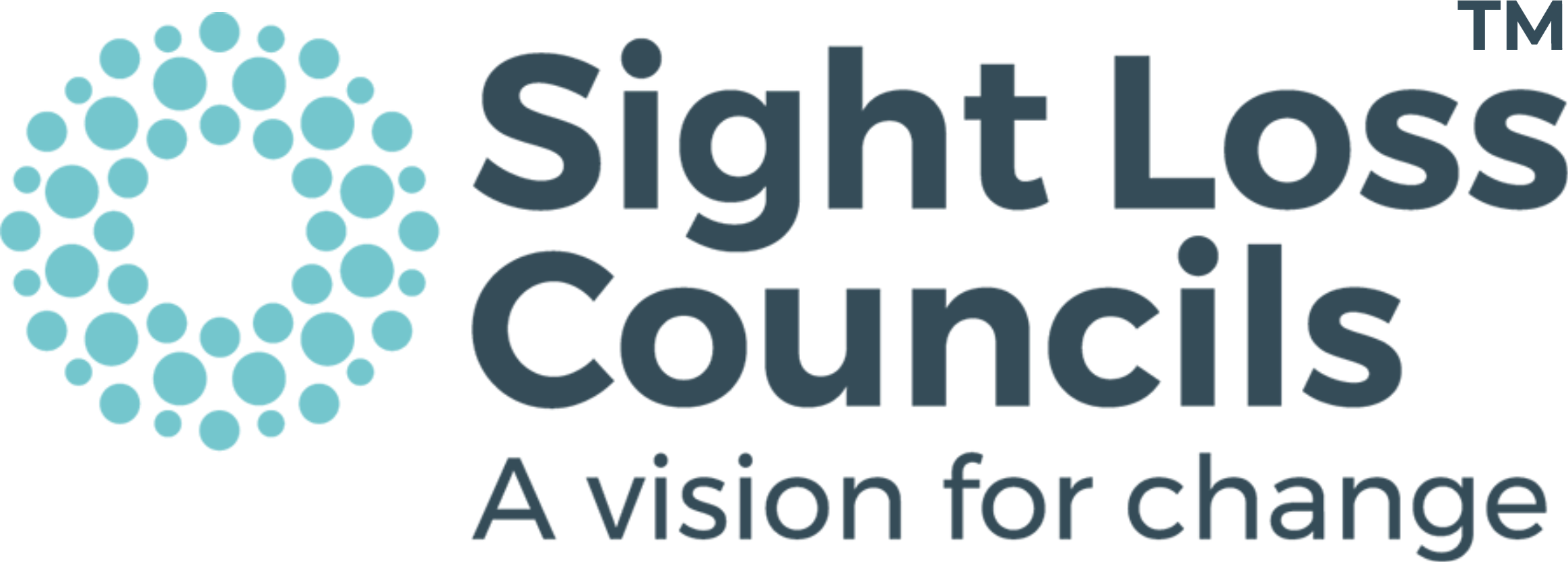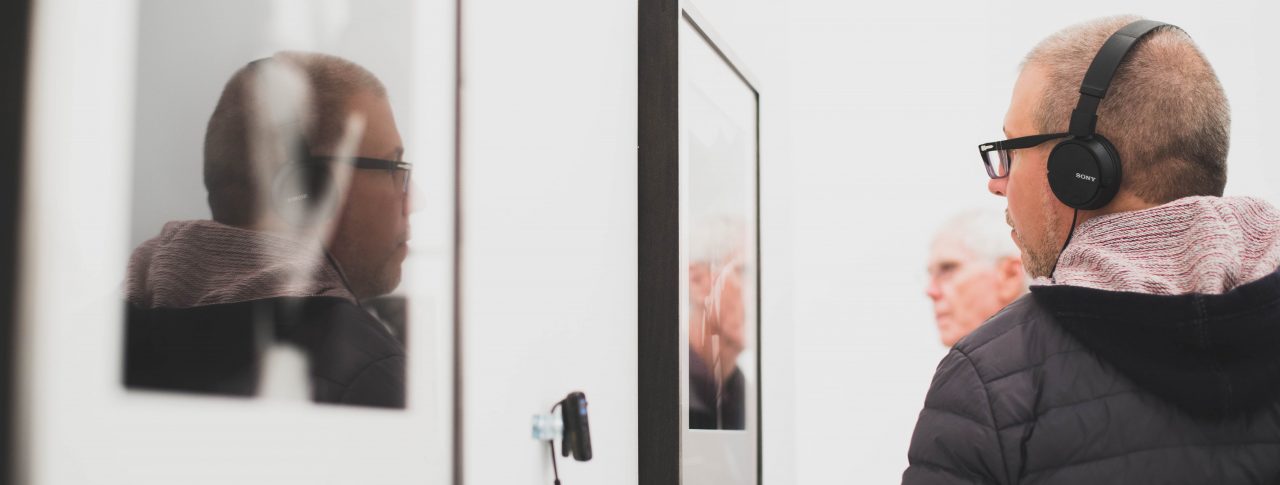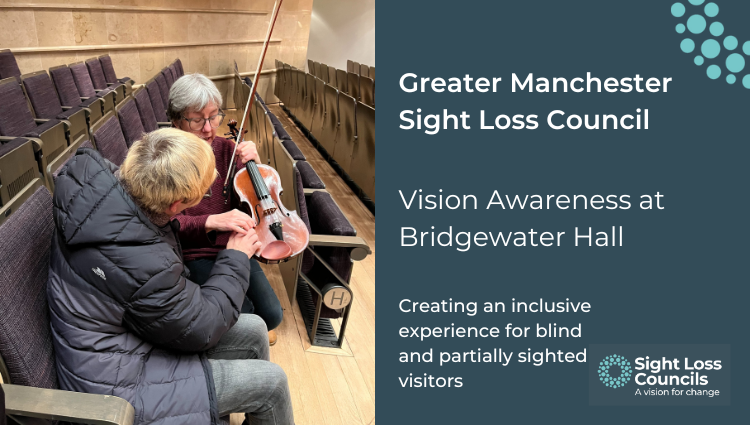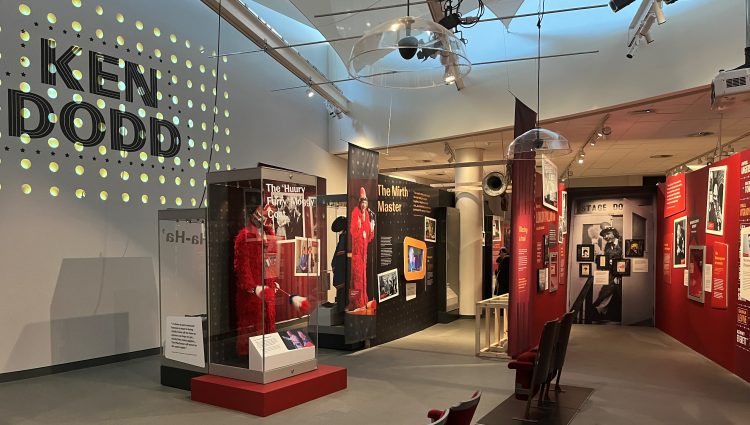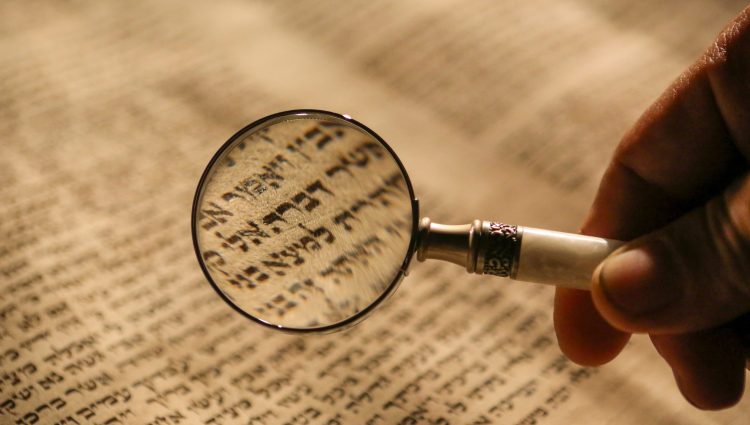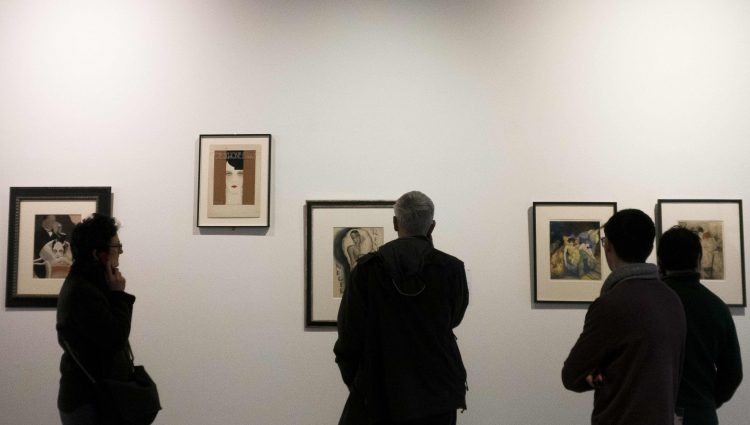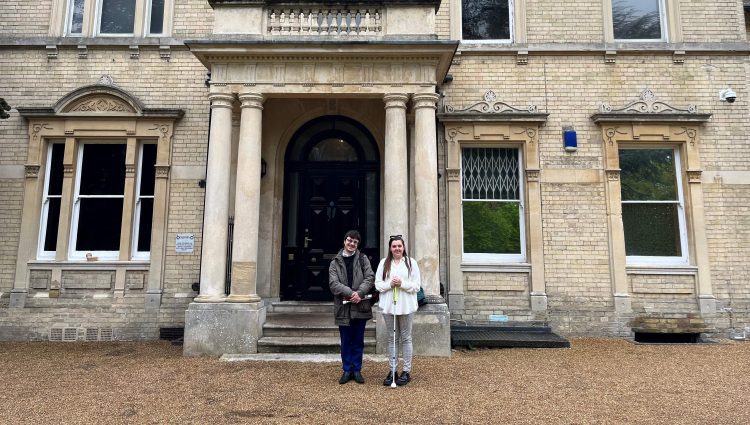Make Art and Culture Accessible
Sight Loss Councils (SLCs) are working with museums, galleries and theatres nationwide to make art and culture accessible. Our goal is to ensure blind and partially sighted (BPS) people can access, experience and participate in the arts.
Arts and culture can play a significant role in the lives of BPS people. For example, music, tactile art and audio described performances enable us to experience art through hearing, touch, and other senses. They also provide powerful outlets for self-expression, communication and creativity. This helps build communities, facilitates discovery and creates a sense of belonging. We may also use art inspire change.
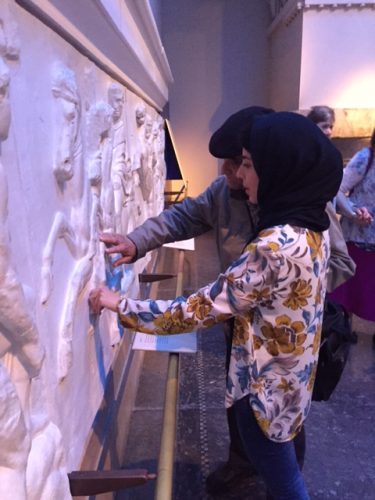
Volunteers interacting with a tactile display
Our work to make art and culture accessible
SLCs have witnessed some incredible work in making arts and culture more accessible and inclusive. For example, we recently launched an audit tool designed by SLC volunteers to identify a venue’s accessibility. This includes theatres, museums, art galleries and other performance space. The tool allows us to have a consistent approach when we are invited to consider a venue’s accessibility.
SLCs also deliver vision awareness sessions to staff at venues. These ensure that BPS visitors have a positive and immersive experience when attending performances, exhibitions and other events.
Tactile displays, 3D-print and audio description
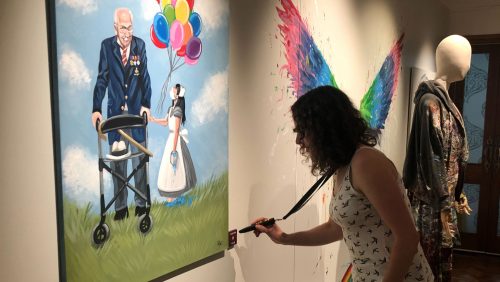
A woman interacting with a painting
Appreciating that not every museum exhibit can be touched, we are currently supporting venues in the production of 3D-printed tactile objects. A blind or partially sighted person can then handle these to gain greater context in terms of texture, size, pattern, etc.
Other examples of our work to remove barriers created by glass display cabinets include creating tactile artwork, increasing access through QR codes, providing audio descriptions of exhibits and distributing grab cards.
We also provide feedback during the creative writing stages of a new piece of musical theatre. SLC volunteers collaborate with playwrights to ensure that the subtle inferences shown on stage are conveyed without the need for additional audio commentary. This is because we believe that the audio-descriptive elements should be integrated into a piece of theatre and included in the dialogue and libretto itself.
In all cases, successful outcomes are achieved because of co-production and consultation with those with lived experience of sight loss. We look forward to continuing our work to help shape inclusive experiences for BPS people with an interest in arts and culture throughout the country.
North Yorkshire SLC member Lesley said:
“I believe that Arts and Culture covers a wide range of enriching and creative opportunities that add a real quality of life to blind and partially sighted participants.
There is so much to get involved in and enjoy. From museums, to theatre, concerts, art galleries and external events, our need to feel involved and be able to contribute is important to us all.
That is why I created an assessment document as a guide that other Sight Loss Council members can use to encourage venues to provide a consistent experience for BPS people. We hope to provide venues with the knowledge and understanding of how they can bring their exhibits or performances to life and become more accessible for our community to enjoy.”
West Yorkshire SLC member, Christopher added:
“Culture is central to all our lives. It’s not just a set of customs values and shared beliefs, but part of the very air we breathe. As such, it is important that we all have access to the arts.
“Blind and partially sighted people make up 3% of the population – that is over 2 million people potentially missing out. This is why audio description and (in the case of museums and galleries) touch, are critical to blind and partially sighted people being able to fully engage. Such services should not be regarded as a luxury add-on, but need to be built into the structure of all artistic endeavour.”
